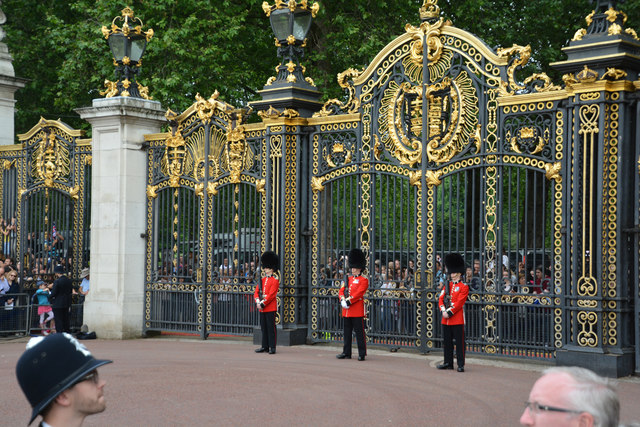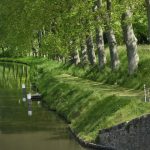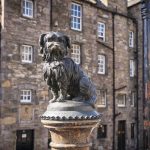What visit to London could miss out Buckingham Palace? This post starts with a little history and some tales from the famous balcony. Then we explain what to look out for if you visit Buckingham Palace, before popping next door to the Royal Mews to meet the horses and admire the coaches and carriages. Finally, also next door, we visit the Queen’s Gallery where some of the royal treasures which won’t fit into any of the palaces are on display.
a little history
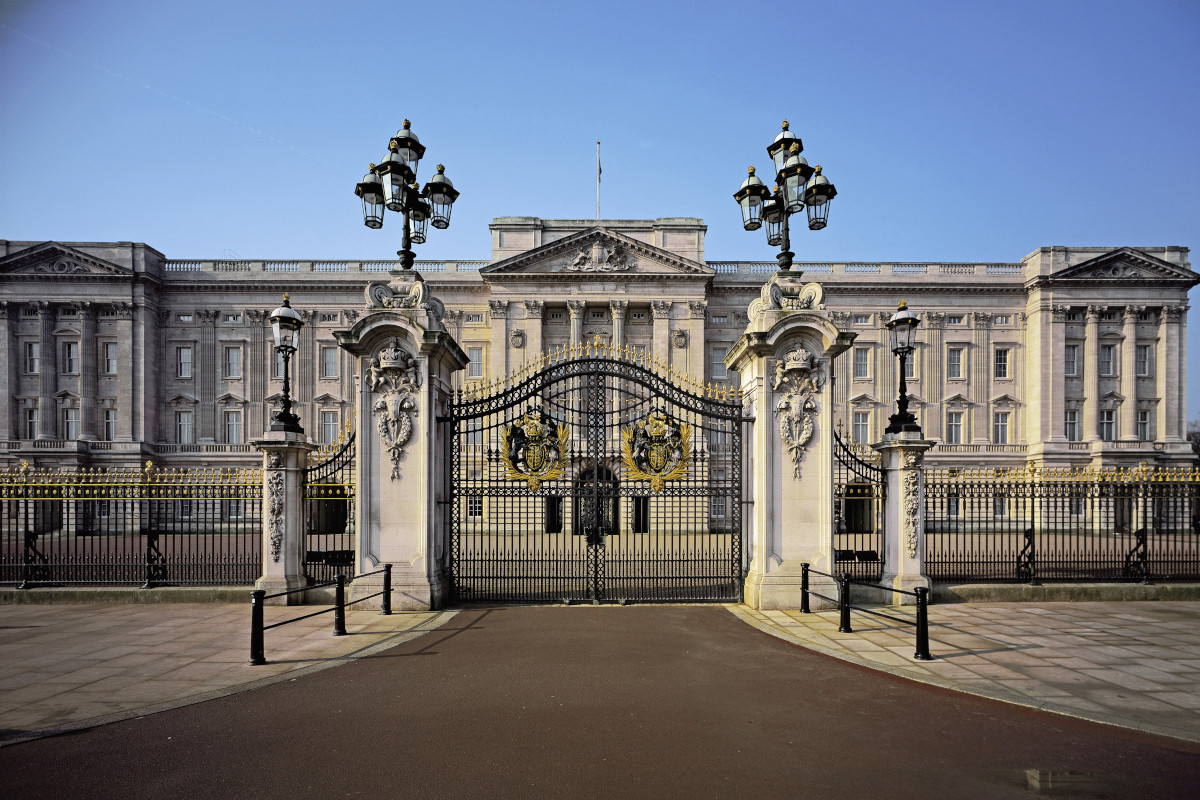
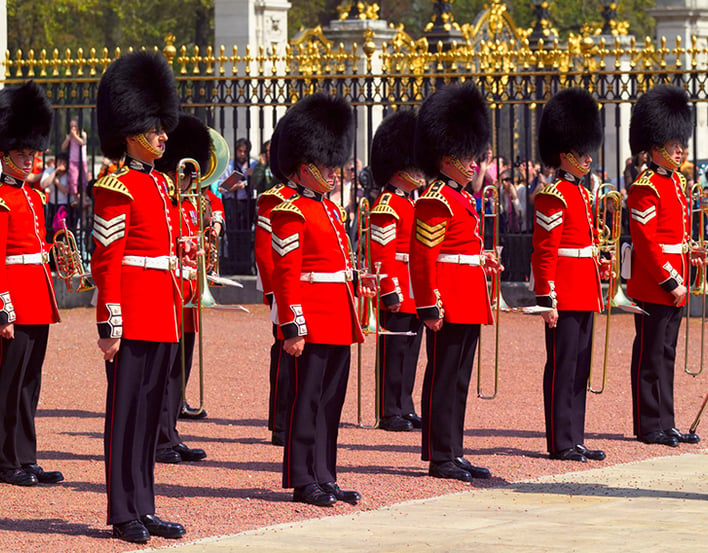
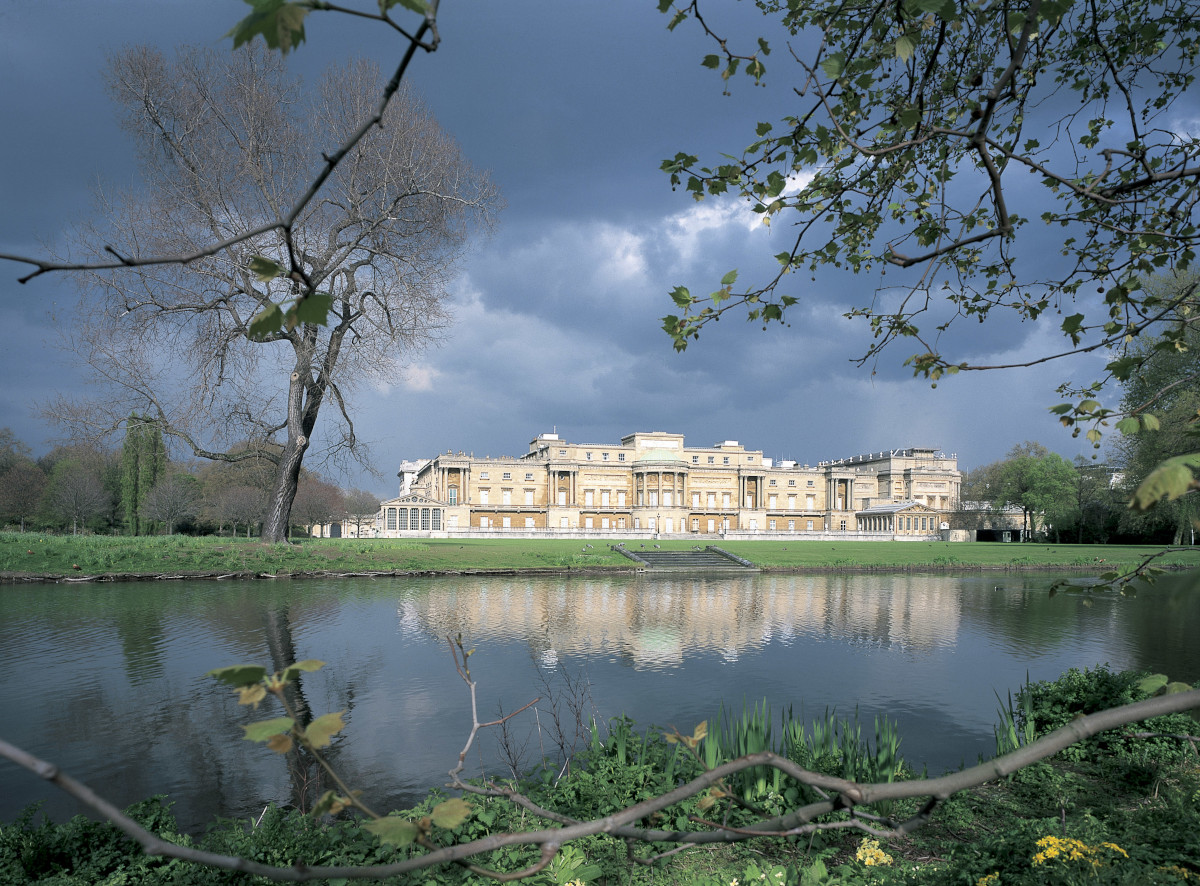
The Royal Family lived at Whitehall Palace until it burned down in 1698 and a new residence had to be found. Buckingham Palace was built for the Duke of Buckingham in 1702, but later sold to George III who lived here with Queen Charlotte and their 15 (!!) children. A whole series of renovations and enlargements followed, most significantly those under George IV – a contemporary described his taste as ‘wicked, vulgar profusion’ – and Queen Victoria who added a new wing as her family grew, including two huge and spectacular rooms for large events, the Ball and Concert Room and the Ball Supper Room where she hosted dances and gatherings until, on the death of Prince Albert, all merriment stopped.
The palace was a little neglected for the rest of Victoria’s reign – she preferred Windsor Castle – but after she died, her son Edward VII oversaw many changes including the memorial to his mother, the Mall, with Admirality Arch at one end and the statue of Queen Victoria outside the palace at the other. The palace guidebook describes this transformation of the area around the palace ‘London’s grandest set piece of urban planning’. The Rough Guide to London finds it ‘bombastic’. Either way, it’s a view of London familiar to television viewers across the globe, being the scene of so many processions and pageants.
The Buckingham Palace balcony has seen many historic events. The first royal balcony appearance was by Queen Victoria in 1851 at the start of the Great Exhibition. It was the scene of a sombre appearance by George V at the start of World War I and jubilant crowds gathered there on Armistice Day in 1918 and on VE Day in 1945 when the Prime Minister Winston Churchill appeared alongside the King and his wife and daughters. The balcony appearance of the newly-weds is a familiar part of royal weddings and Queen Elizabeth II appeared for all three of her Jubilees; the Silver, the Golden and, in 2022, the Platinum Jubilee, one of her very last public appearances.
inside buckingham palace
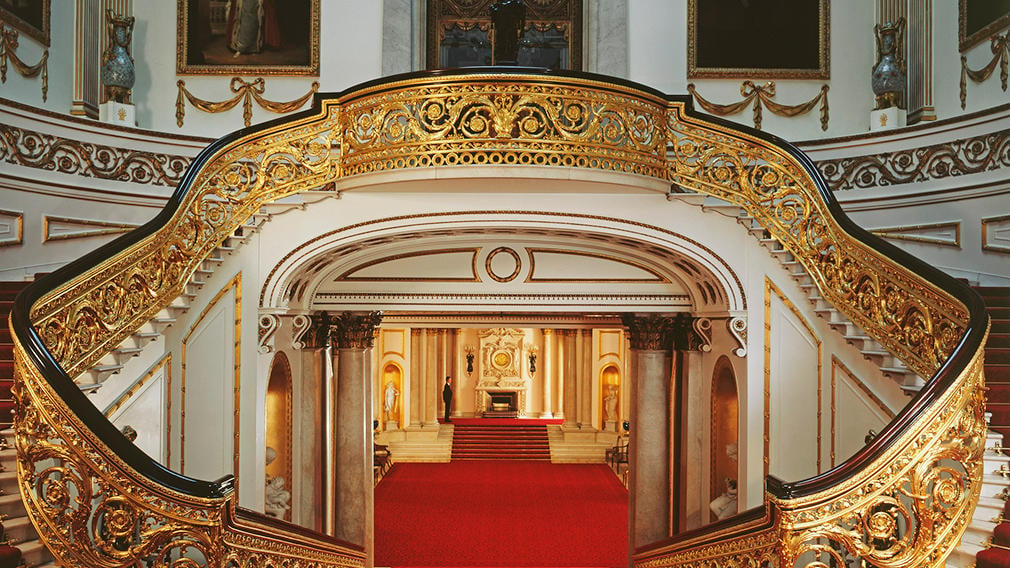
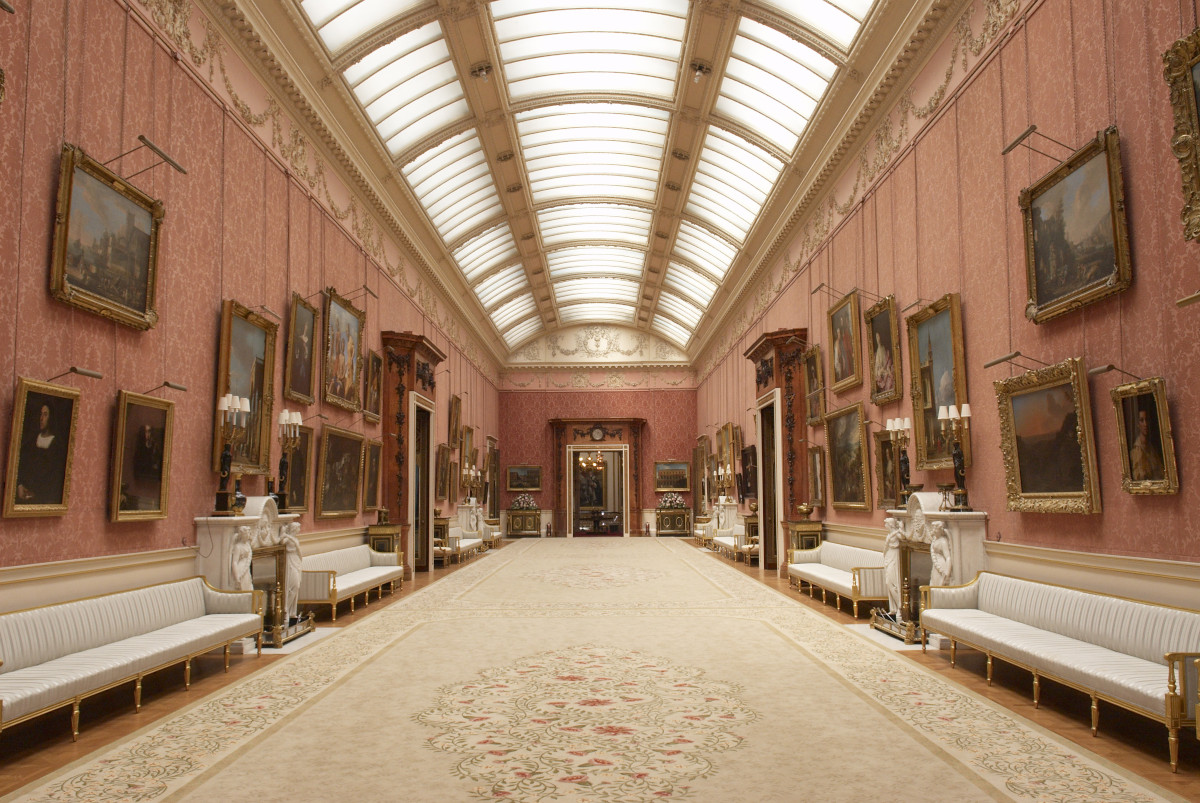
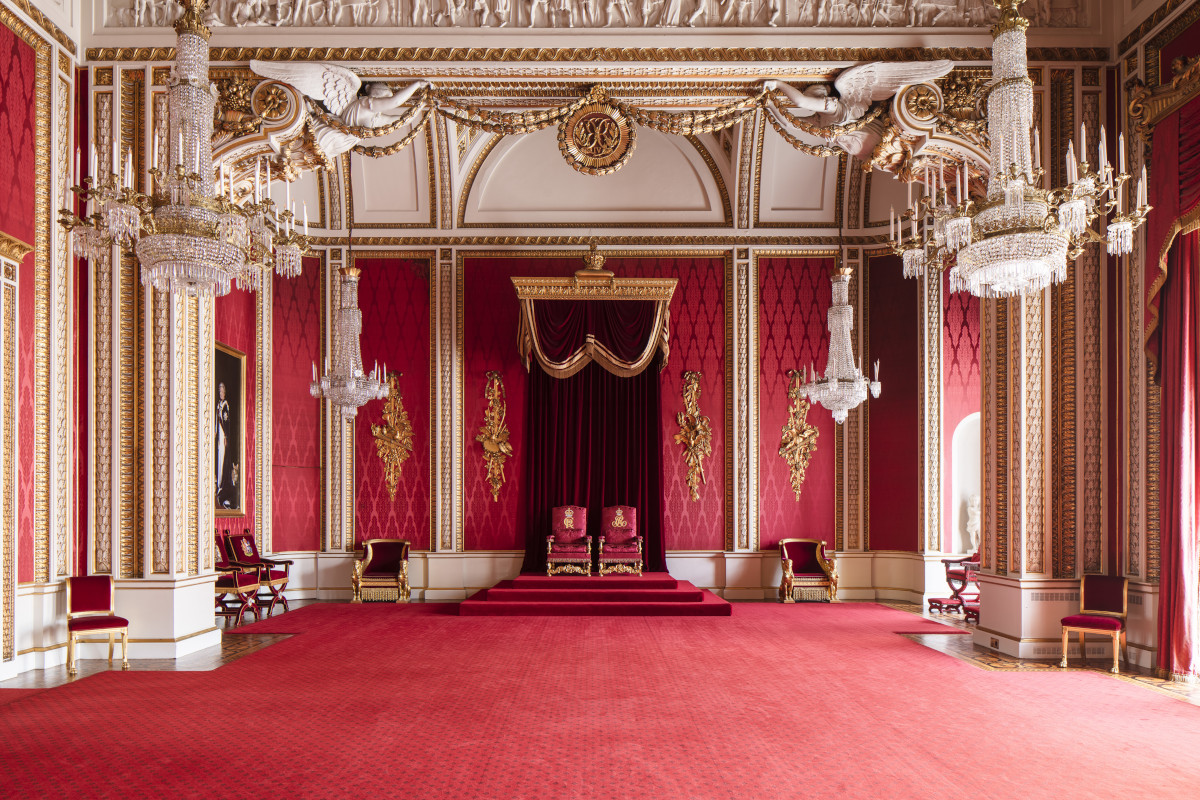
Opportunities for the public to visit Buckingham Palace can be found here See here for information on watching the Changing of the Guard outside the palace
Buckingham Palace has 775 rooms altogether, including 19 State Rooms, many of which you will see if you visit. An idea of the scale of the place is that there are some 20,000 works of art and 350 clocks, which are looked after by 2 ‘horological conservators’. The Grand Entrance Hall is immediately impressive: a double marble staircase, a red, white and gold colour scheme and family portraits chosen by Queen Victoria lining the walls. In the Throne Room you’ll find two thrones, under canopies. The walls are lined with red silk and the ceilings hung with chandeliers. Imagine it lit, as in Queen Victoria’s day, by hundreds of candles.
The Picture Gallery runs centrally through whole palace and is a treasure trove of – for instance – pieces by Holbein, Rembrandt, Rubens and Canaletto. The Ballroom, 34 metres long, is used for state banquets, when up to 170 guests arrive – think white ties and tiaras – to dine from the Grand Service which dates from 1811. Investitures take place there too, when the King or another senior member of the Royal Family honours presents awards to people recognised for outstanding achievements or personal bravery. Other State Rooms include the Green, Blue and White Drawing Rooms and the Music Room, where official family photographs are often taken after weddings and christenings..
There is much more detail on the podcast: on the inside of the palace and on the society events which are hosted there.
the royal mews
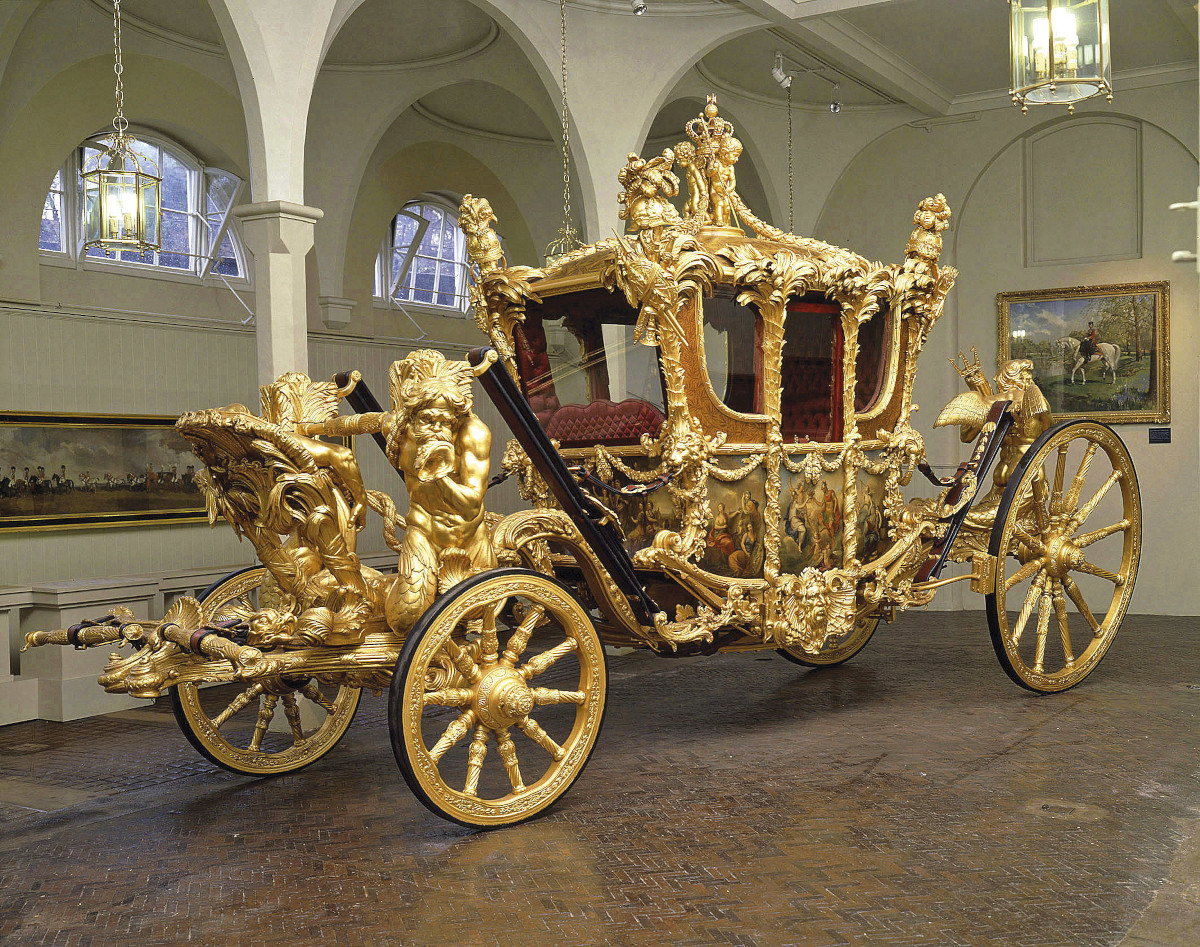
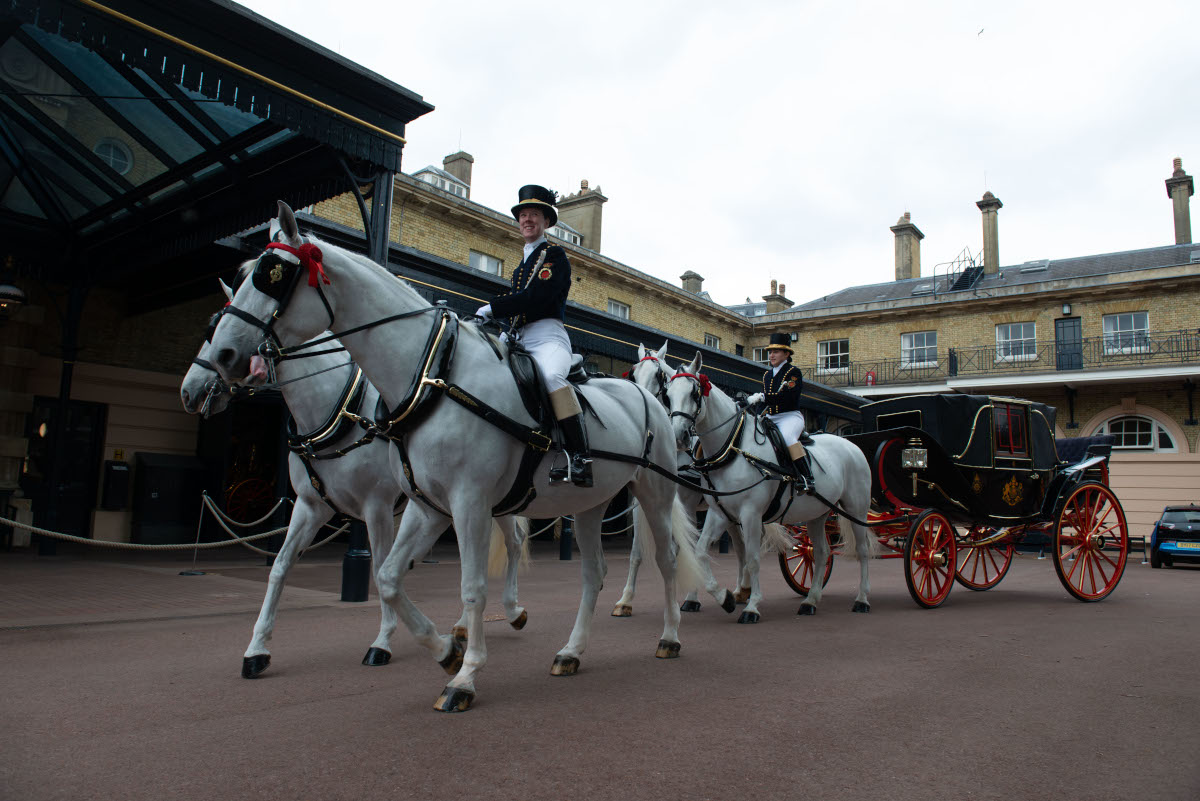
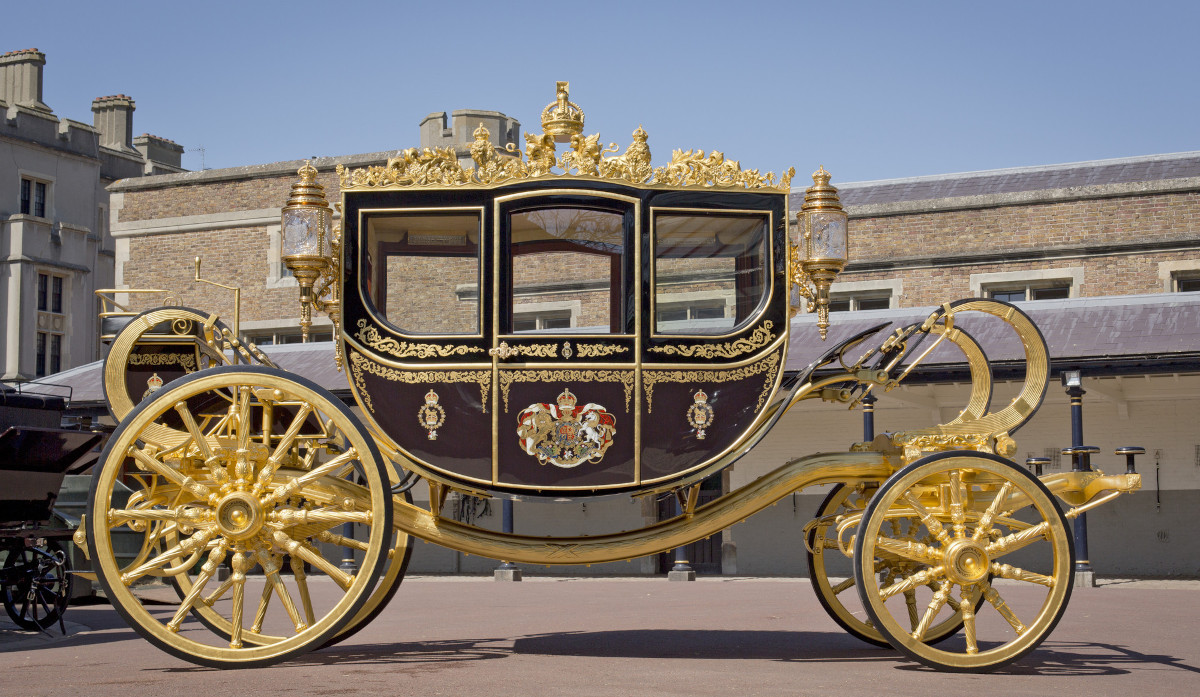
The Royal Mews is where the royal horses, coaches and cars are kept and it too can be visited by the public. It dates back to 1360 when Edward III appointed a ‘First Master of the Horse, but this version was built in 1820. You can tour the stables, where each horse’s name is displayed in its stall – the late Queen Elzabeth II was said to have known them all individually by name – and learn about the routines kept here. They include daily mucking out at 6.00 am, grooming and exercising the horses. There is an annual calendar of events including state visits, Trooping of the Colour and Royal Ascot in the summer and the State Opening of Parliament.
There is a fantastic collection of royal coaches kept here too. The most famous is the Gold State Coach, designed for George III in 1762, when it was pulled by 8 cream-coloured horses to the House of Lords for the State Opening of Parliament. It weighs 4 tons and is gilded all over and sumptuously decorated, although a succession of royals have pronounced it very uncomfortable! The State Landau is a maroon and gold open carriage used at royal weddings and Queen Elizabeth’s Diamond Jubilee. There are many other coaches, with a whole range of colourful names: broughams, clarences, King Edward VII’s Town Coach, the Balmoral Sociable and the French Charabanc, to name just a few.
the queen’s gallery
The Queen’s Gallery, just next door to Buckingham Palace, has changing displays of paintings, sculptures and other objects from the Royal Collection for which room has not been found in the main palaces. It was built in 1962 and majorly refurbished in 2002 to mark the Queen’s Golden Jubilee. There are several hundred works on display at any one time, often including such pieces as Holbein the Younger’s portrait of Sir Thomas More and Queen Charlotte’s notebook. There are often special exhibitions, sometimes on a particular artist and sometimes on a theme such as Sèvres Porcelain or Fabergé pieces.
Listen to the POdcast
Links for this post
Visits to Buckingham Palace
To see the Changing of the Guard
The Royal Mews
The Queen’s Gallery
Previous episode Whitehall and Trafalgar Square
Next episode The Inns of Court
Last Updated on November 21, 2024 by Marian Jones

